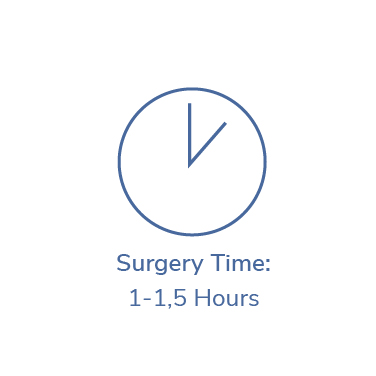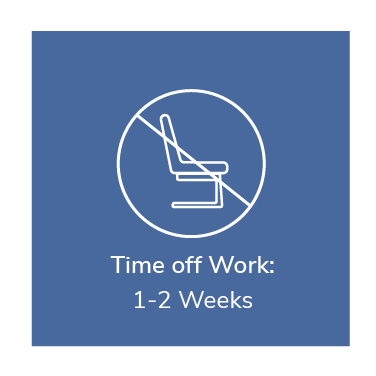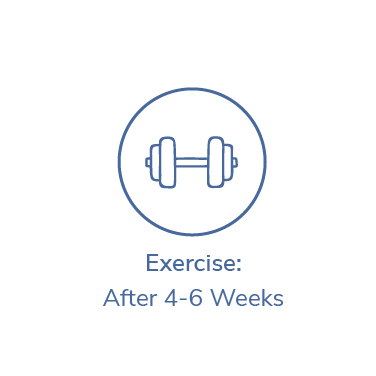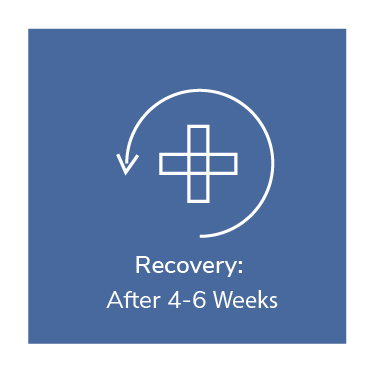




















WHAT IS A podiatry treatment?
Bunion surgery, also known as bunionectomy or hallux valgus correction, is a surgical procedure performed to treat a bunion. A bunion is a bony bump that forms at the base of the big toe, causing the big toe to deviate inward toward the other toes. This condition can be painful, affect foot function, and lead to discomfort while wearing certain shoes.
During bunion surgery, the surgeon aims to realign the bones of the foot, correct the positioning of the big toe, and remove the bony prominence. The specific surgical technique used will depend on the severity of the bunion and the individual patient's needs.
The choice of procedure depends on factors such as the severity of the bunion, the patient's overall health, and the surgeon's assessment. Bunion surgery is typically performed under local or general anesthesia, and patients may need to use crutches or wear a special boot or cast during the initial recovery period.
Following surgery, patients will undergo a recovery period that involves pain management, keeping the foot elevated, and following the surgeon's post-operative instructions. Physical therapy or exercises may be recommended to aid in rehabilitation and regain strength and mobility.
The specific treatment options for bunion surgery can vary depending on the severity of the bunion and individual patient factors. Here are some common treatment options for bunion surgery:
Osteotomy: This procedure involves cutting and realigning the affected bones to correct the deformity. There are different types of osteotomies that can be used, including:
- Chevron osteotomy: The bone is cut in a V shape and realigned to correct the angle of the big toe.
- Scarf osteotomy: The bone is cut in a Z shape and shifted to correct the alignment of the big toe.
- Lapidus procedure: Involves fusing the joint at the base of the big toe to stabilize the foot.
Exostectomy: This procedure involves removing the bony bump or prominence from the side of the foot. It is typically performed when the deformity is less severe and there is no significant joint involvement.
Arthrodesis: In cases of severe deformity or arthritis in the big toe joint, arthrodesis may be performed. This involves fusing the joint to provide stability and relieve pain.
Soft tissue repair: In some cases, the surgeon may tighten or repair the ligaments and tendons around the big toe joint to improve its alignment and function.
The choice of treatment option depends on several factors, including the severity of the bunion, the presence of arthritis, the patient’s overall health, and the surgeon’s assessment. The goal of bunion surgery is to relieve pain, improve foot function, and correct the deformity.
During a bunion surgery, also known as a bunionectomy, several steps are typically involved. The specific procedure may vary depending on the severity of the bunion and the surgeon’s preferred techniques. Here is a general overview of the bunion surgery procedure:
Anesthesia: The surgery is usually performed under local anesthesia with sedation or general anesthesia. The choice of anesthesia will depend on the patient’s preference and the surgeon’s recommendation.
Incision: The surgeon will make an incision near the affected area, typically on the side of the foot where the bunion is located. The length and location of the incision may vary depending on the surgical technique used.
Bone realignment: The surgeon will carefully access the underlying bones and joints to realign them and correct the deformity. This may involve cutting and reshaping the bone or removing a section of bone to improve the alignment.
Joint correction: If the bunion has caused misalignment or damage to the joint, the surgeon may repair or reconstruct the joint to restore its proper function.
Soft tissue adjustment: The surgeon may tighten or repair the ligaments, tendons, and other soft tissues around the big toe to improve stability and alignment.
Fixation: To hold the bones in their new position during healing, the surgeon may use screws, pins, plates, or wires. These fixation devices are typically placed internally and may or may not require removal in the future.
Wound closure: The incisions are carefully closed with sutures or surgical staples. The surgeon may also apply dressings or bandages to protect the surgical site.
Recovery and post-operative care: After the procedure, the patient will be monitored in a recovery area before being discharged. The surgeon will provide specific instructions for post-operative care, including wound care, pain management, and weight-bearing restrictions. Follow-up appointments will be scheduled to monitor healing and address any concerns.
After undergoing bunion surgery, it is crucial to follow the post-operative instructions provided by your surgeon to ensure proper healing and minimize the risk of complications. Here are some general guidelines and considerations for the post-operative period after bunion surgery:
Pain management: You may experience discomfort and pain after the surgery. Your surgeon may prescribe pain medication or recommend over-the-counter pain relievers to help manage any pain or discomfort. It is important to take medications as directed and report any severe or worsening pain to your surgeon.
Wound care: Proper wound care is essential to prevent infection and promote healing. Your surgeon will provide specific instructions on how to care for the incision site, including when to change dressings, how to clean the area, and any necessary medications or ointments to apply. Follow these instructions carefully to keep the surgical site clean and prevent complications.
Weight-bearing and mobility: Your surgeon will provide guidance on weight-bearing restrictions and mobility limitations based on the type of bunion surgery performed and your individual case. It is important to follow these instructions to allow proper healing of the bones, joints, and soft tissues. Crutches, a walking boot, or a special shoe may be recommended during the initial recovery period.
Physical activity and exercise: Engaging in physical activity and exercise should be avoided during the early stages of recovery. Your surgeon will provide specific guidelines on when it is safe to gradually resume activities and exercise. Follow these recommendations to avoid placing excessive stress on the foot and promote optimal healing.
Follow-up appointments: Regular follow-up appointments with your surgeon are essential to monitor your progress, assess healing, and address any concerns or complications that may arise. Attend all scheduled appointments and inform your surgeon of any changes or issues you may be experiencing.
Compression and elevation: Your surgeon may recommend using compression garments or bandages to reduce swelling and promote circulation. Elevating your foot above heart level whenever possible can also help reduce swelling and improve healing.
Recovery timeline: The recovery period after bunion surgery can vary depending on the extent of the procedure and individual factors. It may take several weeks to months for the swelling to subside, and full recovery can take several months to a year. Be patient and follow your surgeon’s guidance throughout the recovery process.
Resuming normal activities: Your ability to resume normal activities, including wearing regular footwear, will depend on the progress of your recovery and the recommendations of your surgeon. It is important to gradually transition back to normal activities and carefully follow any guidelines provided.


WHAT they say
Before the treatment I was always bullied about my lopsided face and bad skin condition. Thank you!
virginia hudson
Beauty has so many forms, and I think the most beautiful thing is confidence and loving yourself.
Kiesza
I had the most amazing experience, from the moment I walked in to the moment I walked out I was cared for with such compassion. All the nurses were amazing, they tucked me in bed, they poured my tea, I cannot fault them. It was like being looked after by family. My anesthetist and surgeon explained everything in detail, I knew exactly what to expect. I would definitely stay here again.
Laura
I was really pleased with the care and treatment that I received at Welbeck Hospital. My surgeon was kind and informative and explained the entire procedure to me. I recovered completely fast. I would recommend it to everyone.
Eva Elliot
FAQS
The recovery time can vary depending on the extent of the surgery, individual healing factors, and the specific techniques used. Generally, it may take several weeks to a few months for the initial recovery. However, it can take up to a year for full healing and final results.
In most cases, bunion surgery is performed as an outpatient procedure, and patients can go home the same day. However, in certain situations or for more extensive procedures, an overnight hospital stay may be required.
The type of post-operative footwear or immobilization required will depend on the surgical technique used and the surgeon’s preference. It may range from a surgical shoe, walking boot, or a cast. Your surgeon will provide specific instructions on what to wear and for how long.
Weight-bearing and walking after bunion surgery will depend on the type of procedure performed and the surgeon’s recommendations. In some cases, you may be able to bear weight and walk with the assistance of crutches or a walking aid shortly after surgery. In other cases, weight-bearing may be gradually introduced over time as directed by your surgeon.
Scarring is an inevitable part of any surgical procedure. However, efforts are made to minimize the visibility of scars by placing incisions in inconspicuous areas and using proper wound closure techniques. Over time, scars typically fade and become less noticeable.
Bunion surgery primarily aims to address the deformity and associated pain caused by the bunion. However, it may not alleviate other underlying foot conditions or pain unrelated to the bunion. It is essential to have a thorough evaluation by a qualified surgeon to determine the cause of your foot pain and the appropriate treatment options.
Bunion surgery is designed to provide long-term correction, and the likelihood of the bunion recurring depends on various factors such as the surgical technique used, the severity of the original deformity, and post-operative care. Following your surgeon’s instructions for post-operative care and maintaining proper foot care can help minimize the risk of recurrence.
The timeline for returning to normal activities will vary depending on the extent of the surgery and the individual’s healing process. Your surgeon will provide specific guidelines on when you can gradually resume activities such as driving, working, exercising, and wearing regular shoes.







